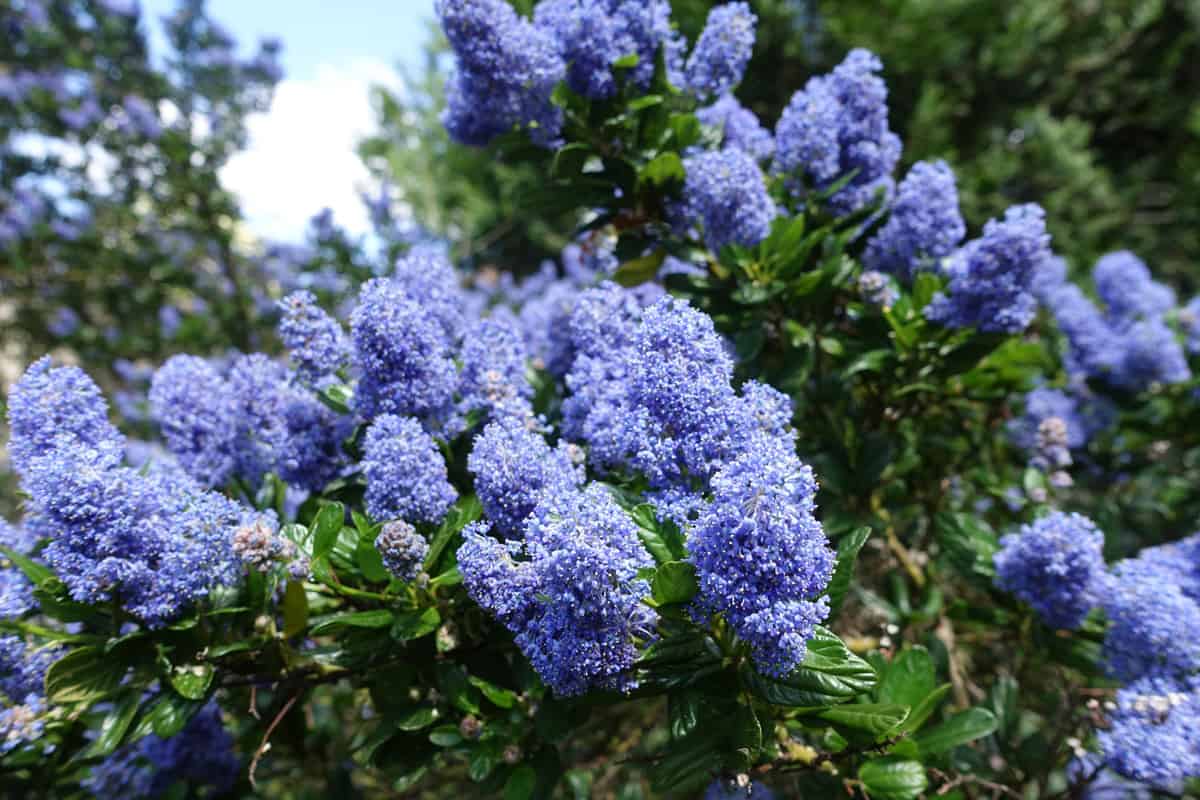Deciding the best time to do some garden work can feel impossible. Do you have a California lilac growing in your yard and think it's time to prune or transplant it? When is the best time of year to do these things? What about planting new California lilacs?
We will cover all these questions and more throughout this article. Let's dive in!
The best time to prune a California lilac is during the late fall and early winter. For transplanting your flower, you'll want to wait to do this until the springtime.
In addition, planting new California lilac should take place in the late fall through early winter, just like pruning.
As we start, we will cover all things California lilacs and discuss the best time to prune, transplant, and plant them. Whether you are new to this flower species or have one already in the ground, we're here to assist. With that said, let's get right into this topic!

What Time Of Year Should I Prune California Lilac?
The best time to prune a California lilac is after it stops blooming in the spring. As we said, you can usually wait to do this towards the late fall or early winter, so there's not too much of a rush.

You also want to check the weather forecast before pruning. If there's still good weather and your flower looks healthy towards the last week or so of summer, you might want to hold off until October/November.
The last thing you want to do is prematurely trim your lilac and cause it to stop blooming.

Where you live will affect this, so everyone's pruning timeline will be slightly different. However, you want to make sure any pruning is done by the time the temperatures become super low.
If you try pruning a California lilac right before it frosts or snows, this can cause it to have trouble greening out once spring hits.
How Much Should You Prune A California Lilac?
In general, California lilacs don't require much pruning to be successful. Therefore, we recommend removing about an inch from the tip of each branch and any dead flowers/foliage when the time comes.
As we said, you can do this in the later fall, so by then, your flower should have no blooms.
It's also good to know that this species will produce next year's blooms near the current flowers, so don't remove too much of your lilac while trimming.
If you remove next year's buds, you could have fewer flowers in the spring.
Most experts recommend only pruning off weak branches from your California lilac. There's no reason to cut it back or off if you see a substantial branch.
The key to this plant is moderation. The less you remove, the better blooms you'll have next year.
When Can I Transplant A California Lilac?

Now that you know when to prune a California lilac, it's always good to know their transplanting schedule. Typically, you want to wait to move a lilac until the spring, once the weather is warm.
These flowers do not react well to transplanting in the cold or extreme heat, so you'll want to check the forecast beforehand.
It's also worth mentioning that many experts recommend transplanting your California lilacs after they bloom. So, if your plant still has new flowers, you might need to wait a few weeks to do this.
In addition, if you have hotter summers, it's also possible to transplant a lilac in the early fall (September-October). These months will be cooler than June or July but not so cold.
Ideally, you want to prune and transplant a lilac at the same time. If you need to remove some excess foliage from your plant, it's better to do that pre-move rather than after.
Messing with your flower too much within a short time can send it into overload, which isn't good before the winter dormancy.
How Do You Transplant A California Lilac?
For those ready to move their lilac, you want to make sure a few things are in order:
- You have found a sunny location
- The soil has good drainage
- You have already pruned
- You have fresh potting mix
Once you have all of those things finished/in hand, you want to:
- Gently remove your lilac from its current location.
- Dig a hole about twice its size in the new spot.
- Place your lilac into this hole.
- Fill the hole with fresh potting mix.
- Water your California lilac, and you're done!
On top of that, you might want to add a layer of compost near the base of your California lilac, as this helps stimulate new growth and can help with drainage.
According to Gardeners Net, your lilac may also benefit from an elevated location, as this prevents water pooling near the base of your lilac.
This species doesn't respond well to high moisture levels in its soil, so preventing root rot is always a good idea.
When Is The Best Time Of Year To Plant California Lilac?

Switching gears, it's time to figure out when you should plant a California lilac. In general, you want to wait until fall or winter to put a lilac into the ground.
Especially if you're growing your plant from seed, letting it establish through the colder winter can be beneficial and yield better spring growth.
An interesting fact about California lilac is that to grow them by seed; you need to replicate a forest fire. You can use hot water on your seeds before planting them into the soil.
Next, you will let your seeds develop in the soil through winter. They should germinate within a few months and sprout as the temperatures rise.
Furthermore, allowing the winter rain to saturate your seeds in the ground is beneficial, so you don't want to try and plant them during the spring or summer.
How Fast Does California Lilac Grow?
Depending on where you have them, California lilac can grow rather quickly. For instance, if your flower is in the sun, has good drainage, and you keep it fertilized, it can grow between ten and 15 feet within the first 18 months.
Of course, this won't be the same for everyone, so don't hold onto that estimate too tightly.
In general, lilacs grow their first year slowly in the soil if the conditions aren't amazing but will pick up the speed after that.
You also want to ensure the soil your California lilac is in is neutral or alkaline, as that can make a difference. However, these flowers aren't super picky, so some acidity won't slow them down.
The sun plays the most significant role in your plant's growth. As we said above, California lilac requires full sun throughout the year, so if yours isn't getting six or more hours daily, there could be an issue.
If you're in the desert growing a lilac, that is when a bit more shade will be helpful. Remember, this plant species does best with moderation, which also applies to growing conditions.
How Big Will A California Lilac Get?

You can expect your California lilac to get around ten or so feet tall once it reaches maturity. With that said, this can depend on how your flower grows and whether you train it vertically.
According to Den Garden, some California lilacs stay as ground covers, only reaching six inches tall when they're mature. Other varieties will grow taller, often reaching 10+ feet in ideal conditions.
Many gardeners train their lilac to grow vertically using a stake or trellis. This is a great idea if you want to turn your shrub into a tree.
Considering the deep blue flowers on a California lilac are stunning, these can become the centerpiece of your landscaping in no time.
Circling back to our previous section, your lilac will only grow big if it is healthy. If you don't give your flower enough light, drainage, and attention, it could become stunted.
Do California Lilacs Live Long?
Even though your lilac will grow quickly, that doesn't mean it will live long. Generally, these flowers don't live past 10-15 years, which can be a major drawback.
With that said, evergreen varieties tend to have even shorter lifespans versus deciduous California lilacs, so many things come into play here.
On a brighter note, most flowering shrubs won't live for five years, so at least this one can stay in your garden for upwards of a decade.
In addition, every plant responds differently to its climate/conditions, so yours may surprise you. Regardless, the more sun and drainage your California lilac have, the longer it will live.
Flowers are meant to enjoy, so don't get too caught up in their lifespan.
To Wrap It All Up

Whether you have a California lilac in your garden or want to grow one, it's always good to know their maintenance routine. From what we found, you want to prune your flower in the fall/winter, transplant it during the spring, and plant one from seed/cutting in the fall or winter.
On top of that, you want to try and do significant pruning before the weather gets too chilly. California lilacs prefer minimal trimming and infrequent transplanting, so please keep that in mind.
Regardless, creating a routine for your flowers, whether annuals or perennials, is always good.
Made it to the end? Check out these helpful related garden posts below!
When To Cut Back Lilac Bushes (And How To Do That)?
15 Plants For Shallow Soil And Full Sun That You Will Love
Shrubs For Pots In Full Sun [17 Great Ideas For Your Landscaping]
